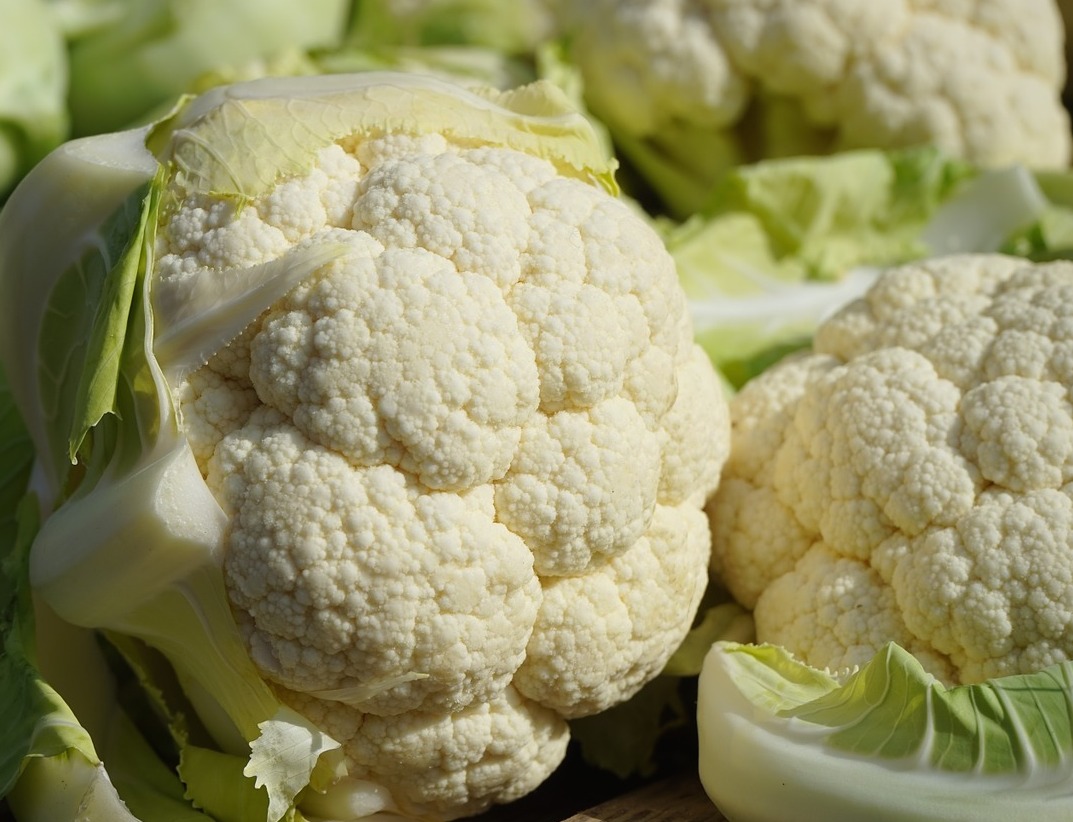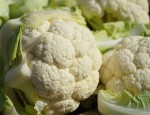
Cauliflower Recipes from the 1800s
Cauliflower wasn’t very popular during most of the 19th century because it was expensive to buy. In the latter part of the century, though, when hot houses became common, cauliflower became more affordable. The recipes and advice below are from cookbooks published in the 1800s.
INFORMATION BELOW FROM 1800s COOKBOOKS
CAULIFLOWER
Cauliflower is similar to cabbage, but its flavor is a little more delicate. The cauliflower possesses a most agreeable flavor and is sufficiently delicate to be served at the tables of the wealthy. It is a wholesome vegetable but should be eaten moderately, as it induces flatulence. Persons of weak constitutions and delicate stomachs should abstain from cauliflower as much as possible.
This vegetable is generally quite expensive. It is found in the market a greater part of the year, being now grown in hot houses in winter. It is in perfection from the first of May to November or December.
Choose cauliflowers that are close and white. Trim off the decayed outside leaves and cut the stalk off flat at the bottom. Then the head should be placed upside down in a pan of salt water and allowed to soak for an hour in order to drive out the small bugs or worms that are so frequently found in this vegetable.
COOKING CAULIFLOWERS
Lay them an hour or two in cold salt and water. Remove the outside leaves and boil them half an hour in milk and water. If they are strong, pour off the water when they are half done, and put fresh boiling water to them.
Cauliflower should always be cooked in an uncovered vessel, as are cabbage and Brussels sprouts, if a strong disagreeable flavor is to be avoided.
BOILED CAULIFLOWER
Wash and trim, and boil in a bag made of mosquito-netting to keep it whole. Boil steadily in well-salted water for one hour. Dish carefully, and pour over it a nice drawn butter.* Cauliflower may be spoiled with too much cooking. Care should be taken to drain the water as soon as it is done. Any cold remains may be used as salad, or chopped and baked.
*drawn butter – butter melted until it foams and the solids sink. Foam is skimmed off and the solids discarded, leaving clear butter.
CAULIFLOWER SOUFFLE
Take three eggs, eight ounces cooked cauliflower, one-half teaspoon salt, and one-half ounce butter for the pie dish. Beat the eggs, the yolks and whites separately, and the latter to a stiff froth. Chop the cauliflower very fine, add salt, and mix all together thoroughly. Turn into a well greased flat pie dish and bake in a quick oven* for about twenty minutes. When done, remove from the pie dish, and serve quickly.
*quick oven – about 400-450 degrees Fahrenheit.
CAULIFLOWER AND TOMATO SOUFFLE
Boil cauliflower in salted water until tender, then drain and separate into tufts. Put in a buttered baking dish a layer of tufts, then a layer of tomatoes. Salt and pepper the tomatoes. Continue these alternate layers until the dish is full. Make a boiled sauce of two tablespoons butter, one and one-half tablespoons flour, one cup of milk, and the yolks of two eggs. Lastly add three tablespoons of grated cheese and the beaten whites of the two eggs. Pour into the baking dish and cover all with a layer of bread crumbs dotted with bits of butter. Bake in a moderate oven* for one-half hour.
*moderate oven – about 350-400 degrees Fahrenheit.
CAULIFLOWER AND POTATO SOUFFLE
Take three ounces mashed potatoes, three ounces of cauliflower, one-half ounce butter, three eggs, one-half teaspoon salt, one-half teaspoon pepper, and one-half ounce butter. Beat the eggs well, whites and yolks separately. Then add the potatoes, the cauliflower chopped very fine, and the seasonings. Stir all well together, then fill small patty pans (which have been well greased), and bake in a moderate oven for half an hour. A small knob of butter placed on the top of each will help to brown them, and any flavoring, such as chopped onion, parsley, or herbs, may be added if liked.
CAULIFLOWER SOUP
Boil a head of cauliflower in water, or in soup stock or chicken broth. If water is used, add an onion. Lift out the cauliflower, and lay aside one half-pint of tufts. Mash the rest through a sieve using the water in which it was boiled to press it through. Put one large tablespoon of butter over the fire in a saucepan and when melted, stir in a large tablespoon of flour. Stir this into the puree until of a creamy consistency. Add a pint of hot milk, a beaten egg, salt and pepper to taste, and a little grated nutmeg if liked. Add the reserved tufts, simmer five minutes and serve.
CAULIFLOWER AU GRATIN
Boil tufts of cauliflower in salted water until nearly done and drain. Arrange in layers in a buttered baking-dish, with Cream Sauce between the layers and sprinkling each layer thickly with grated Parmesan cheese. When the dish is full, cover with sauce, sprinkle with cheese and crumbs, dot with butter, and brown in the oven. Serve in the baking-dish.
Cream Sauce
Use one tablespoon butter, one tablespoon flour and a half pint of milk. Stir constantly until heated through. Also called milk or white sauce.
PICKLED CAULIFLOWER
Pick the whitest and closest bunches. Cut into small sprays or clusters. Plunge into a kettle of scalding brine* and boil three minutes. Take them out, lay upon a sieve or a cloth, sprinkle thickly with salt, and when dry, brush this off. Cover with cold vinegar for two days, setting the jar in the sun.
Then pack carefully in glass or stoneware jars, and pour over them scalding vinegar seasoned thus: to one gallon, allow a cup of white sugar, a dozen blades of mace, a tablespoon of celery-seed, two dozen white peppercorns, some bits of red pepper pods, and a tablespoon each of coriander-seed and whole mustard. Boil five minutes. Repeat the scalding once a week for three weeks; tie up and set away. Keep the cauliflowers under the vinegar by putting a small plate on top.
*brine – water saturated with salt.
CAULIFLOWER FRITTERS
Parboil the cauliflower—that is to say, boil until it begins to be tender—about fifteen minutes. Then plunge it into ice-cold water, which keeps it white. Break it up into tufts. Dip each one into thick béchamel sauce slightly warmed. Let them get cold, then take each piece separately and dip it into carefully made frying batter, and drop them into boiling lard. Fry a pale brown, and serve garnished with fried parsley. Serve very hot on napkins.
Béchamel Sauce
Cook together two tablespoons each of butter and flour, then add two cups of white stock and cook until thick, stirring constantly. Season with salt, pepper, and grated nutmeg.
Frying Batter
Make a batter of a tablespoon of melted butter, half a cup of milk, the yolk of an egg well-beaten, salt and pepper to season, and a tablespoon or more of flour.
FRIED CAULIFLOWER
Boil the cauliflower till about half done. Mix two tablespoons flour with two yolks of eggs, add water enough to make a rather thin paste, and add salt to taste. Beat the two egg whites till stiff, and then mix with the yolks, flour, and water. Dip each tuft of the cauliflower into the mixture, and fry them in hot fat. When done, take them off with a skimmer, turn into a colander, dust salt all over, and serve warm.
CAULIFLOWER RAGOUT
Pick and wash the cauliflowers very clean, stew them in brown gravy till they are tender, and season with pepper and salt. Put them in a dish and pour gravy on them. To decorate, lay around the dish some already-boiled sprigs of white cauliflower.
CAULIFLOWER SALAD
Take a head of cauliflower and boil in a piece of fine cheesecloth. Remove from the cloth, drain, and sprinkle over it two tablespoons of lemon juice or vinegar, and stand aside to cool. At serving time, break the head apart into flowerets, and arrange them neatly on a dish. Sprinkle over a little chopped parsley or wild sorrel.
Cover with French dressing made as follows: put a half-teaspoon of salt and as much white pepper into a bowl. Add gradually, six tablespoons of olive oil. Rub until the salt is dissolved, and then add one tablespoon of vinegar or lemon juice. Beat well for a moment and it is ready to use. It is much better if used at once.
image from pixabay





11 thoughts on “Cauliflower Recipes from the 1800s”
WE tend to eat more broccoli than cauliflower, but these look like good recipes.
I prefer cauliflower because the taste isn’t as strong as broccoli, but it’s good to vary our diet.
We eat both – sometimes at the same time. I buy a frozen organic mixture at Costco.
I’ve only recently acquired a taste for cauliflower. Thank you for the fun recipes! They all sound very good. I currently like it steamed with a bit of lemon juice.
Glad you like the recipes. I’m having fun going through old cookbooks and seeing what people used to eat.
I love cauliflower just about any way. It is great with broccoli too.
I’ve been eating more cauliflower lately, but need to start cooking broccoli, too.
Mmmm, I love cauliflower! thanks for the extra ways to cook it.
I’ve begun to eat more cauliflower and am enjoying it.
Mosquito netting and boiling for one hour! EEEK! How interesting to see how cooking cauliflower has changed.
And think about how hot kitchens were when food was cooked for so long.